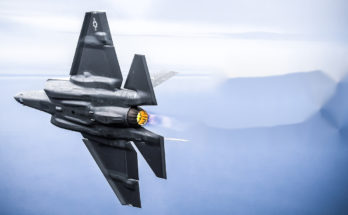Canada issued a draft solicitation for its CF-18 Hornet replacement program, giving bidders until the end of the year to provide feedback before a formal request for proposals is released in 2019. The Royal Canadian Air Force plans to buy a fleet of 88 new fighter aircraft to replace the legacy Hornets. Contenders include the Boeing F/A-18E/F Super Hornet, Dassault Rafale, Eurofighter Typhoon, Lockheed Martin F-35, and Saab Gripen.
Final bids will be due from the contractors in May 2019, according to the Department of National Defence. The first aircraft are expected to be delivered in 2025. The acquisition could be worth up to CAD19 billion ($14.5 billion), but this does not include future costs such as sustainment or follow-on upgrades.
#Canada reaches another important milestone with the #FutureFighter project, with the release of draft request for proposals to eligible Suppliers for their review and feedback! #DefenceCanadahttp://t.co/QkqUVaFXRx
— Public Services (@PSPC_SPAC) October 29, 2018
Canada’s fighter replacement has become nothing short of a political circus that has been ongoing since 2010. At that time, the Conservative government announced its intent to procure 65 F-35s, but that plan was sidelined due to pressure from the opposition over cost concerns. Upon taking office, Prime Minister Just Trudeau announced a plan to launch a new fighter competition, and said that Canada would not buy the F-35.
In 2016, the government also announced a desire to purchase a number of Super Hornets as interim fighters until a full replacement for the Hornets could be found. The aircraft were to fill a newly expressed capability gap that arose from a recent defense policy change. Critics of this approach believed it would give the Super Hornet an advantage during the fighter competition, possibly leading to the interim aircraft ultimately being integrated as a permanent part of a future Super Hornet fleet.
Canada was in discussions with Boeing to procure 18 new F/A-18E/F Super Hornets, and the State Department approved a potential $5.2 billion deal, which also included associated electronics and weapons for the aircraft (link). The plan fell through when an unrelated trade dispute erupted after Boeing claimed that the Canadian government was subsidizing Bombardier’s CSeries commercial aircraft. Ottawa subsequently abandoned the Super Hornet deal, and decided to procure 18 secondhand F/A-18A/B Hornets from Australia to meet its interim fighter requirement. That figure was subsequently increased to 25 aircraft.
The F-35 and F/A-18 were once considered the clear favorites in Canada’s fighter replacement effort, but Ottawa’s history with the F-35 and the government’s recent spat with Boeing have resulted in increasing optimism among European aircraft manufacturers. It remains to be seen whether recent struggles with the American aircraft will have a lingering impact on the decision process.
As editor of International Military Markets, North America, Shaun has cultivated a deep understanding of the vast defense markets in the United States and Canada. Shaun's perspective on defense procurement and budget issues has been cited in a variety of defense periodicals, including Defense News and National Defense Magazine. Further, Shaun played an integral role in the development of Forecast International's U.S. Defense Budget Forecast product, which offers an unprecedented level of insight into the Pentagon's acquisition budget. In addition to providing original analytical content for the U.S. Defense Budget Forecast, Shaun oversees an internal defense budget forecasting process involving Forecast International's team of skilled systems analysts following release of the DoD's annual budget request. Shaun is also in charge of managing Forecast International's Weapons Inventory database.




